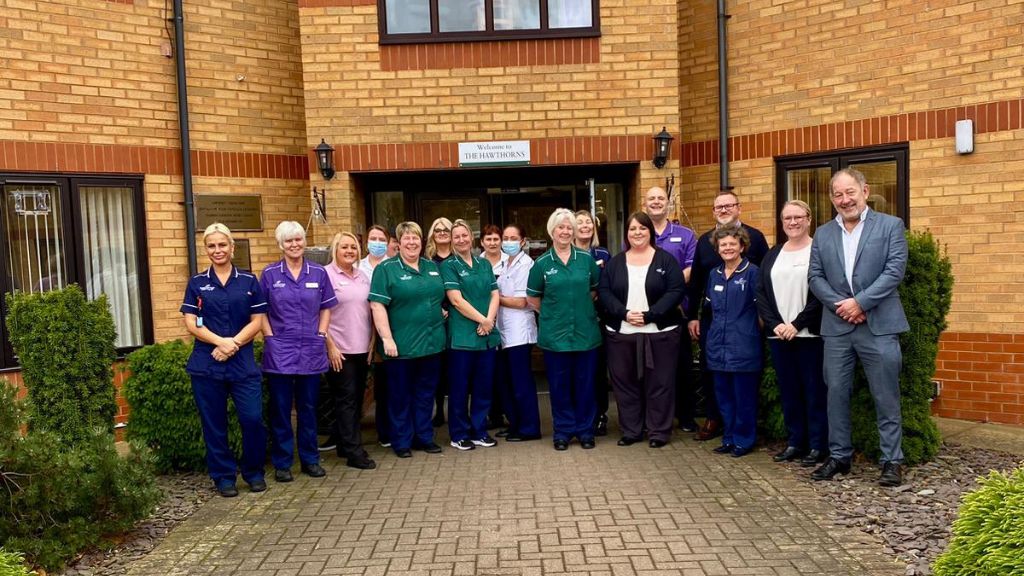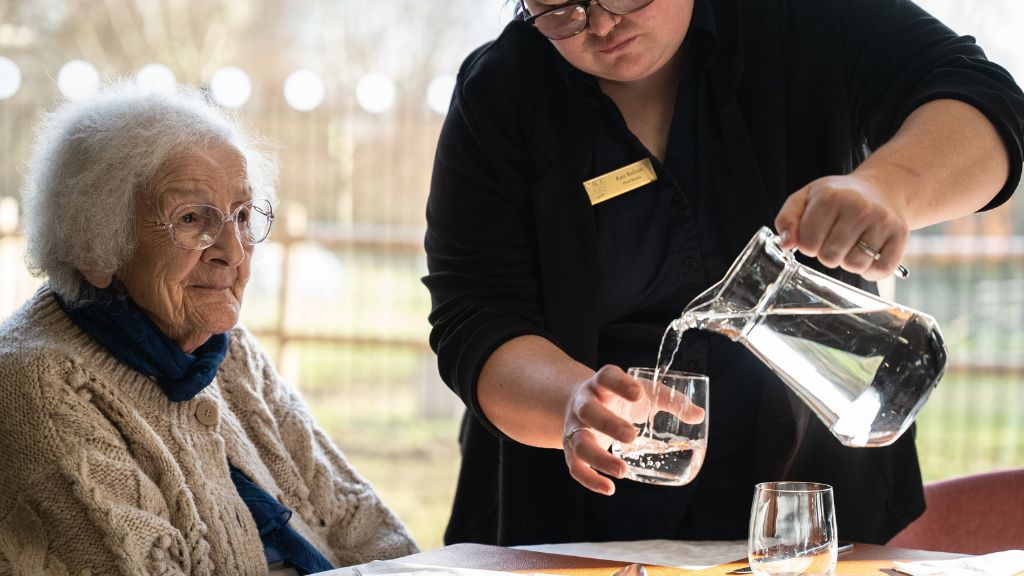EXCLUSIVE: Barchester’s Pete Calveley talks 10 years as CEO
Barchester Healthcare chief executive Pete Calveley talks to Caring Times to mark the 10th anniversary of his joining the company and talks about the election, the future of the Care Quality Commission, and why the provider is in the best place it has ever been.

How is business going at the moment?
Really good. Quality-wise, we’ve hit our highest ever CQC ratings with Good and Outstanding at 86.5% and no Inadequate homes. The rest are rated Requires improvement, and lots of those haven’t been inspected for years, so we’re very ready for inspection – it’s a bit frustrating.
We always put quality first. Ever since I’ve been here, we have always believed that if you put quality first in each of your homes and hospitals, you’ll get the best reputation locally. You’ll become the provider of choice, and you’ll get commercial success, but only in that order.
Commercially speaking, things are great. We’ve now got 260 care homes and private hospitals, with over 13,000 residents and patients.
You mentioned struggling to get the CQC to reinspect some of your homes, and that’s just the tip of the iceberg when it comes to the sector’s complaints. Do you think the regulator’s days are numbered?
You may or may not be aware, we actually put a judicial review in against the CQC, because of their implementation of the single assessment framework, which we thought was chaotic. There was no commitment that they’d actually look at the homes which have gone the longest without inspection. Some of our homes haven’t been inspected in nearly seven years, and there was no promise that they were going to prioritise those homes or even give us a timetable.
One of the most frustrating things about this is that these ratings are actually misleading. We have to publish on our website the fact that a home is rated Requires improvement or whatever it may be. After seven years, we may have had two different managers come and go, neither of whom were actually responsible for the last inspection. All our staff feel a bit demoralised, and managers think, “Why would I go to a home that is Requires improvement with no guarantee that it will be inspected in my time there?”
The staff have all worked so hard to put that ‘requires improvement’ rating in the rear-view mirror, and now with our internal audit system I don’t doubt these homes would be ‘good’ or ‘outstanding’, because that very much mirrors the CQC inspections. It’s quite demoralising.
Thankfully, since we had a meeting with them, they’ve actually committed to showing a timetable and prioritising homes that have gone the longest since their last inspection, particularly those that are either Inadequate or Requires improvement.

Another big problem with the single assessment framework was that, even though the CQC inspects based on around 30 quality statements, they were only initially committing to look at five or six of those quality statements in an inspection, and after seven years that’s simply not good enough. Such lacklustre inspections undermine public confidence in the regulator and in care homes.
People have even made jokes about doing your own whistleblowing anonymously to try and get the inspectors in. I’m not sure if it’s ever happened, but there’s a sort of urban myth that it might.
Fortunately, they are making some compromises and I’m hoping that they will implement them as they’ve suggested.
Profits were up for Barchester in the 2022/23 financial year. What do you put that down to?
An element of that is that we’re growing. We build 10 new care homes a year, so that helps in some senses, but also, when you open a new care home, you usually make a loss in the first year. If you’re opening 10, it drags your profitability back a bit. The flipside of that is that the historic ones we opened three or four years ago are now trading well.
When it comes to the commercial side of the business, we operate on a home-by-home basis, just as we do on the quality side. Then we break down the commercial elements – whether it’s occupancy or whether it’s agency use, staffing, procurement costs – and we focus on every single aspect of it. For example, recruitment was quite difficult a couple of years ago across the sector and agency use was very high.
Now though, we are very well recruited thanks to our fantastic recruitment team, and only about 0.5% of our working hours are filled by agency staff, which is a tiny amount compared to the sector average. This was really important to us because obviously agency staffing is very expensive as labour costs go, but also it’s inconsistent for residents – they’re getting staff who don’t know them and haven’t been trained in the ‘Barchester way’.

Elsewhere, things like procurement, occupancy and fee negotiations – all of those elements are coming together and are always underpinned by our focus on quality driving our reputation in local markets, which is why profits have been so strong.
The most important thing is a relentless focus on every detail of every home and every hospital. This means we can help and support the teams on the ground, but we can also fix problems as we see they’re arising.
What do you think of Labour winning the general election? Will it be a good thing for social care?
That’s a tough one. There’s a lot of talk about “You can’t fix the NHS without fixing social care” because they are interdependent and mutually supportive, and yet, historically, people have treated them as different silos.
The idea of having a whole care community that works well with admission, treatment and discharge to the right setting from hospital is, of course, appealing – whether that’s back at home, supported sometimes by domiciliary care, or whether it’s a care home.
There’s a huge amount more that the care sector can do if we work in partnership with the NHS, social services and local authorities in terms of getting that integrated care; that mutual understanding of where the best place is for a person and what skills you need in each of those places to make sure people get the best care and best rehabilitation to maximise the opportunity of them going back into the community.
That all requires great joined-up thinking, and it requires proper funding and an acceptance of the true cost of care for the service that’s being provided.
There were changes to the Health and Care Worker visa earlier this year, namely the banning of migrants bringing dependants with them. Has this significantly affected Barchester or were you not particularly reliant on overseas staff before the change?
We have 19,000 employees and each year our international recruitment team works really well with the homes we are prioritising because they are struggling to recruit in their particular locality. This means we bring over about 300 nurses or carers a year from different parts of the world.

In the first few months since it was implemented, we’ve not seen a reduction in applications or a slowing of people moving through the application process. But, as you can see, 300 out of 19,000 staff isn’t a major proportion of our workforce, so it’s not a major worry for us.
You’ve just hit a big milestone: 10 years at the helm at Barchester. Congratulations – how does that feel?
It’s so, so great. I know it sounds like a cliche, but it’s absolutely flown by, that 10 years.
I started on 1 June 2014 and there was a load of work to do to put that quality-first agenda into place and start those improvements. It was also a massive job selecting the right senior team, operational teams and support teams, as well as general managers and their teams in the homes.
It’s been such a full-on experience, but I think we’ve got to a really great place now. We’ve got fantastic teams and support across the board, and I think we’ve achieved a huge amount.
We started that new-build programme – 10 new-builds a year. We also started refurbishing the whole estate to make sure that the lived environment is ideal for the lived experience of the residents and their families, but also a great work environment for our staff.
Every year we upgrade a number of homes to improve that experience for both residents and staff. That number will be around 27 this year, and we’re actually investing around £24 million. It’s the right thing to do, especially when the homes are more profitable, because it means we can deliver an increasingly fantastic quality of service. Their success means we can reinvest back into those homes, back into staff.
We try and support our staff in every way we can, with their wellbeing and their work environment, but also their career pathway. Barchester has a personal development plan for literally every member of staff. That provides an opportunity for every member of staff to sit down and say “OK, if I want to get to there, what support or training or courses do I need in order to achieve my aspiration?” It’s things like this that have got staff turnover and staff satisfaction well above the healthcare average.
“There’s a huge amount more that the care sector can do if we work in partnership with the NHS”
So many of our team members have developed and progressed through the business. Some of them have started as carers or senior carers and ended up being general managers or regional directors in our business. Deputy managers have gone on to become general managers because we have our ‘Barchester way’ – it’s our blueprint of what we’ve learnt over the last 10 years or more and how we want things to be done across every aspect of running a care home or hospital.
Unsurprisingly, there’s a certain way people have to be trained. When our staff train through the ‘Barchester way’ and communicate and pursue their own personal aspirations, we end up with great retention, career development and staff satisfaction.
That’s one of our most satisfying achievements over the last 10 years – the fact that we actually invest in the buildings, invest in staff development and look after their wellbeing. There was a time when we weren’t a living wage employer, and now we pay a minimum of 40p above the living wage. Often the average is more than £1 over the living wage.




